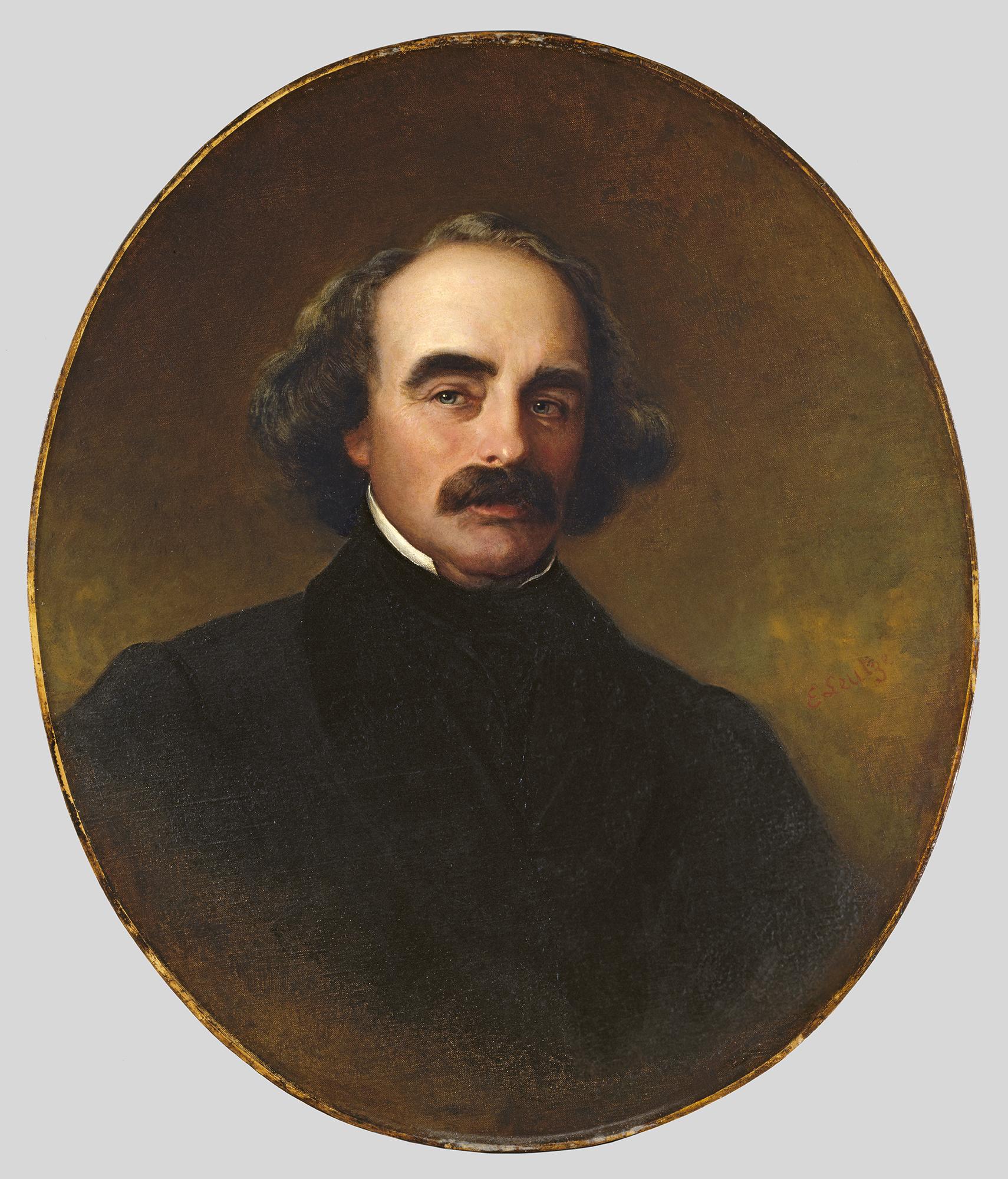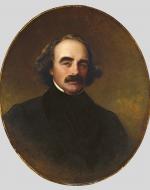Created by Katie Wagner on Wed, 05/01/2024 - 19:14
Description:
Author of The Minister's Black Veil, The Birthmark, and A Scarlet Letter, Nathaniel Hawthorne was arguably one of the greatest writers of the 19th century. The American author was born July 4 of 1804 in Salem, Massachusettes, exactly twenty eight years after the United States became 'one Nation'. Above is an oil portrait of Hawthorne, painted by artist Emanuel Gottlieb Leutze in 1862, just two years before his passing on May 19th, of 1864. Hawthrone was one of the many well known transcendentalists of the 19th century alongside Ralph Waldo Emerson and Henry David Thoreau. Unlike the other advocates of this movement, Hawthorne did not always agree that humans would inevitably succeed if they unify together. Although he lived in close proximety with Emerson, Thoreau, and first female transcendentalist Margret Fuller, Hawthorne preferred to live in solidutity rather than companionship. While he did spend many years living in the same neighborhood as these well known activitsts, according to one source "for six months in 1841 he was a resident at the agricultural cooperative Brook Farm, a utopian experiment in West Roxbury, Massachusetts" (Britannica). This farm, as spoken about in the entry titled "Brook Farm", was for the most faithful of transcendentalists. However, many argue that Hawthorne was less of a Transendentalist, and more of a realist because of his dark outlook on life.
In his infamous writings The Ministers Black Veil, The Birthmark and A Scarlet Letter, instead of glorifying humans for their perpetual innocence like Emerson and Thoreau, Hawthrone exposed society for their impure morals and used the imperfections of humans to show his uncommon stance. In the recent years some historical critics have insisted that Hawthrone was a anti-transcendentlalist but cannot explain why he has been mislabed even after all of this time. One individual even said, "He saw the worst in human nature and chose to believe that the worst will happen, he had a lack of hope or confidence in human" (Examples of Anti Transcendentalism in the Ministers Black Veil). However, there is still serious debate wether or not this unforgettable writer was for or against the transcendentalist movement.
Works Cited
“Examples of Anti Transcendentalism in the Ministers Black Veil.” Examples Of Anti Transcendentalism In The Minister’s Black..., 9 Feb. 2023, www.ipl.org/essay/Examples-Of-Anti-Transcendentalism-In-The-Ministers-56....
Leutze, Emanuel Gottlieb. “Perspectives: Nathaniel Hawthorne.” National Portrait Gallery, 2 Dec. 2022, npg.si.edu/nathaniel-hawthorne.
“Nathaniel Hawthorne.” Encyclopædia Britannica, Encyclopaedia Britannica, inc., 16 Apr. 2024, www.britannica.com/biography/Nathaniel-Hawthorne.
“Nathaniel Hawthorne : An Anti-Transcendentalism.” Bartleby, www.bartleby.com/essay/Nathaniel-Hawthorne-An-Anti-Transcendentalism-FZC.... Accessed 3 May 2024.


